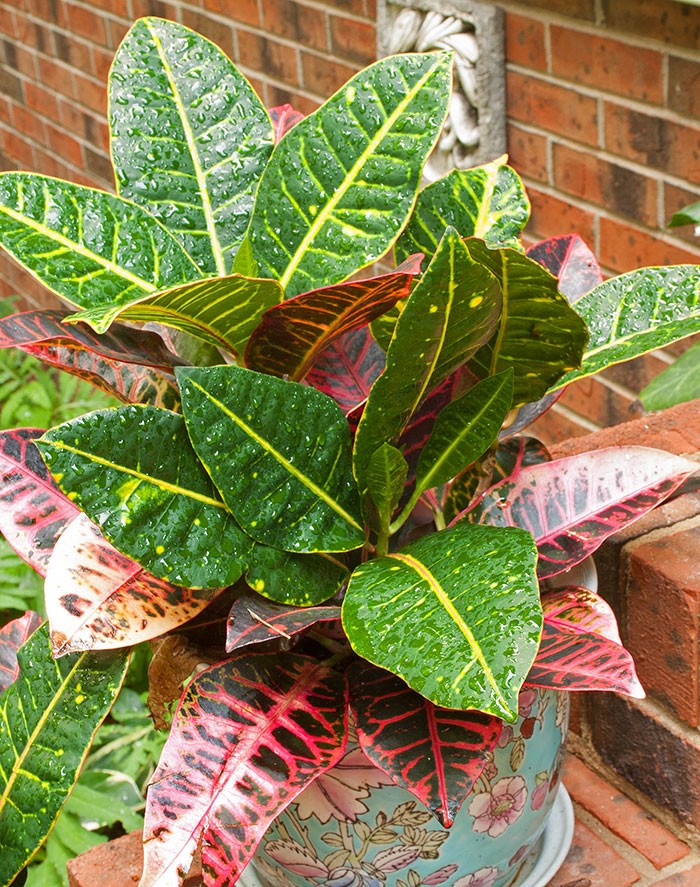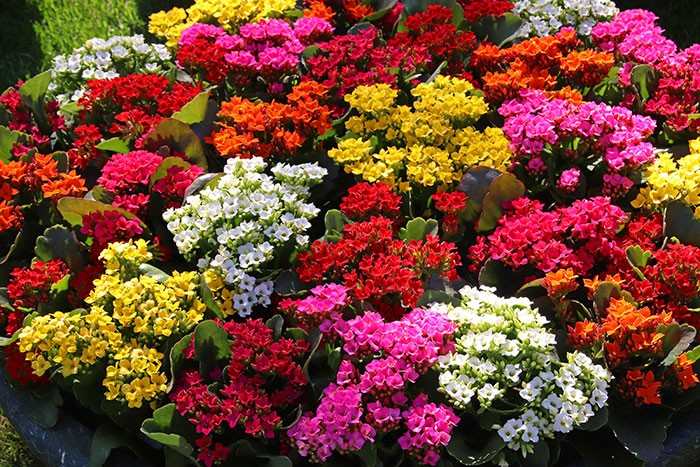Kalanchoe is a weird plant. It is a succulent that hails from the subtropics of Madagascar off the east coast of Africa, meaning, on our side of The Big Pond, possibilities point to it being a popular showoff outdoors in the simmer of our southern summer. Instead, it is usually found full of blooms in the winter at garden shops waiting to be taken home as a houseplant to sustain gardeners visually while they wait for the glory of yet another spring.
What gives?
Like the poinsettia, another subtropical plant at its fanciest during the colder times of the year, kalanchoe’s flower development is set off by lessening sunlight as the shorter days of fall and early winter approach. The process normally takes about three months, meaning this pretty’s blossoms are usually primed to pop during the winter months.
And when a kalanchoe’s blooms pop, they pop big time, literally covering the 12-inch-tall plant with clusters of small, sprite-like, four-petaled flowers in solid colors that vary in shades of white, yellow, orange, red, pink and purple. This sassy bloom show can easily extend into the new spring.
There are over one hundred species of kalanchoe, but the beauty typically found for sale is Kalanchoe blossfeldiana. As a subtropical native-turned-houseplant, it does need certain conditions to thrive. Tops on the list is sunlight — the more you can pour on kalanchoe in the winter, the better. This usually means setting it in a south-facing window, but don’t let the leaves touch the glass, because they could be bit by bitter cold coming through the panes on freezing nights.
Kalanchoe is susceptible to root rot, but this can be overcome by replanting in a slightly larger container with quality, well-draining potting soil that has been further fluffed up with a good dose of perlite. Also, only water the pots when the soil surface is dry to the touch. A diluted fertilizer solution can be included in your irrigation routine once a month but not when the plant is resting during the fall and winter.
A vacation outside in the summer will please this warm weather lover. Set it in a location under high shade away from direct sunlight because strong summer rays can scorch the leaves. Attention should also be given to kalanchoe-loving bad bugs such as scale, mealybugs and aphids trying to besmirch your beautifully weird plant before it is taken inside in early autumn for another cold season bloom session.

Croton
If you enjoy pampering houseplants, keep in mind indoor greenery pleasures such as fiddleleaf fig, philodendron, rubber plant, dracaena and croton that have large, smooth leaves will show off better if they are wiped at least once a month using a soft cloth lightly moistened with warm water.
Periodic wipedowns will not only dispatch the occasional six-legged pest, but they will also perk up the foliage coloration of such houseplants. Perhaps more importantly, however, this leaf cleaning will remove surface dust and other particles that can interfere with these potted pretties’ all-important photosynthesis process.
To Do in the Garden
January
- The beginning of the year is a good time to search online seed catalogs for selections that were dependable for you in the past as well as for enticing new introductions. Now is not when you plant most annual and perennial seeds, of course, but ordering early helps assure any picks you make won’t be tagged at checkout by the dreaded “Out of Stock.”
- For watering plants, the garden hose won’t get much of a workout this month, but it can still be useful, especially if you are thinking about adding another bed to the landscape. Use its long length and flexibility to create the curves and swerves of a potential outline for the new planting area before any digging is done.
February
- Before the spring rush to plant, plant, plant, use this quiet time in the garden to tend to your hardscape features. Reset loose stones or bricks on steps and pathways, level leaning birdbaths and statuaries, straighten sagging bed borders, clear off dead annual vines on fences and trellises, repaint faded birdhouses, oil that creaky gate — basically, find any excuse to get your inner handyman outside and enjoy the crisp air of the fading winter.
- Dormant bare-root roses, which can be planted in the late winter, will start showing up at local garden centers and online nurseries this month. Ideally, plant such roses as soon as possible, but give the roots a beneficial hydration session in a bucket of water for about half a day before settling them into well-draining, sunny sites.
- 2021 Maggy Awards: Restaurants
- 2021 Maggy Awards: Lifestyle
- 2021 Maggy Awards: Shopping
- 2021 Maggy Awards: Services
- Presenting the 2021 Maggy Awards!
- Apex High School Remembers Beloved Soccer Coach
- The Devil’s in the Details
- Nonprofit Spotlight: The Carying Place
- Small Business Spotlight: The Refinery Salon
- Osha Thai Kitchen & Sushi
- Liquid Assets: Phat Thor Stout from Norse Brewing
- Liquid Assets: Last Call & Quick Decisions
- Garden Adventurer: Color Your World with Kalanchoe







